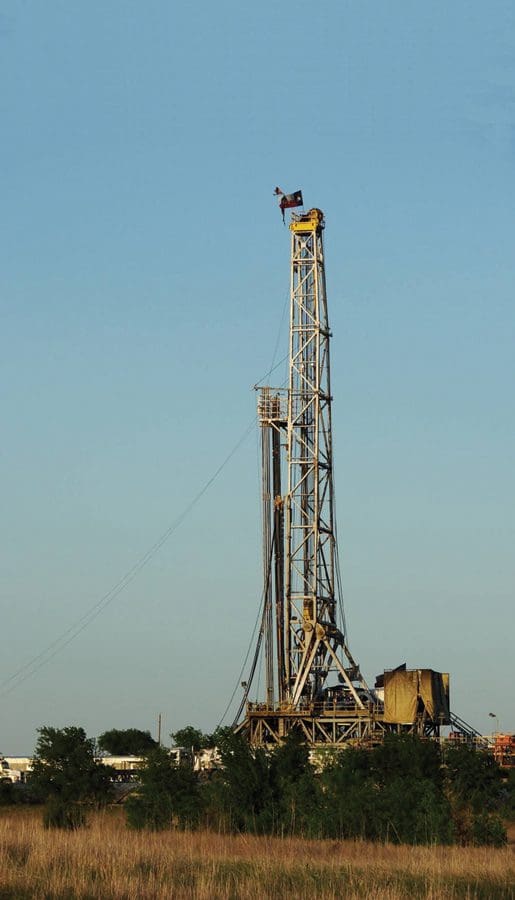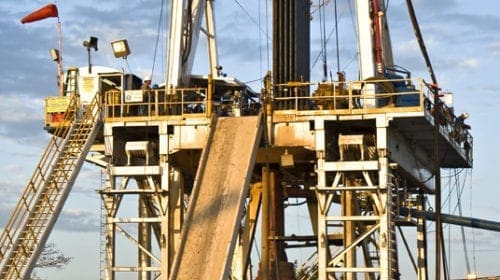Back in July of 2010, the immediate future looked anywhere from bleak to uncertain for Gulf Coast drilling. The post-Macondo moratorium was solidly in place, with no clear end date in site. Industry leaders rallied, pulling out all the stops to fix the gushing flow of subsea crude, to get the offshore drilling industry back into
operation and to push the federal government to begin permitting new offshore exploration. Three years later, the portents of doom and gloom are lost in a flood of glowing reports for the oil and gas industry’s future. In fact, new drilling technologies have pushed the total of known reserves to its second-largest annual jump in exploration history.
There are still challenges, though. Despite the number of new wells and opportunities created, there still exists an underlying frustration, and some industry voices are claiming our current energy stability has occurred in spite of governmental policy – not because of it. However, it is undeniable despite a formidable new regulatory obstacle course, continuing attacks from environmentalists and ongoing political challenges, the Gulf Coast oil and gas industry is still leading the way toward energy independence for the United States.
A NEW ENERGY BOOM
In its annual report on known oil and gas reserves, the U.S. Energy Information Administration shows the known reserves of crude oil and lease condensate rose 15 percent during the year ending on Dec. 31, 2011, the last year for available data. This raises the known crude reserve from 25.2 billion barrels to 29 million. This annual jump is the second record increase in a row for the crude reserve, leaving the nation with its largest reserve since 1985. Texas and Pennsylvania represent 73 percent of the new oil reserves. But, this is also only half of the picture. On the natural gas side, known reserves during the same period rose almost 10 percent, from 317.6 trillion cubic feet to 348.8 trillion cubic feet.
Despite the misconception that all growth in the energy sector is coming from tight oil and shale play, the report shows that only 38 percent of the known gas reserves are in shale plays. The common denominator behind the growth, both in oil and gas, is technology. Adam Sieminski, administrator for the EIA said:
According to the EIA report, total oil discoveries in 2011 were sourced primarily from Texas, North Dakota, and the Gulf of Mexico federal offshore. Texas led by a considerable margin, with discoveries of 1.7 billion barrels, mostly in the Eagle Ford area, while North Dakota added 695 million barrels, marking that state’s third consecutive year as a major source of total discoveries. Total oil discoveries in the Gulf of Mexico Federal Offshore added 441 million barrels in 2011, an increase of 90 percent over the 232 million barrels of discoveries in 2010. The resumption and quickening pace of exploration and appraisal activities in the deepwater Gulf of Mexico following the lifting of the drilling moratorium was the main contributing factor to the increase in discoveries in that area.
NATURAL GAS GOES PRIME TIME
The growth of the nation’s natural gas reserve has not only driven down prices, but it has also made the fuel a strong competitor for use in vehicles. So far, government motor pools and commercially operated vehicles have been the early adopters of compressed natural gas for fleet use, but auto manufacturers are planning to push compressed natural gas vehicles into the mass consumer marketplace. This could mark a paradigm change for the auto and petroleum industries if those vehicles reach mass acceptance. Of course, prices also affect the reserve, which is likely to change as companies queue up to export liquefied natural gas, primarily to the Far East. Cheniere Energy received the regulatory go-ahead to export last month as it moves to complete its first pair of liquefaction trains at its Sabine Pass facility in Lake Charles, La. Still, some industry advocates are frustrated with the pace of the export permit approval process. “The Lake Charles permit is a welcome signal that Energy Secretary (Ernest) Moniz recognizes the importance of LNG exports to economic growth, but there are still thousands of jobs and billions in investments waiting on the sidelines for federal approval,” said Eric Milito, the American Petroleum Institute’s director of upstream and industry operations. “America is experiencing an energy revolution thanks to our abundant natural gas resources, and LNG exports are critical to unlocking the benefits for U.S. workers and reducing the trade deficit.”
During 2012, the 12-month, first-day-of-the-month, average spot natural gas price fell nearly 34 percent from the 2011 average to $2.75 per MMBtu. Increases in domestic production, largely from shale plays, drove that drop along with a corresponding rise in inventories. According to the EIA, in the first half of 2012, the daily Henry Hub spot price dipped below $2.00 per MMBtu, averaging just $1.95 per MMBtu in April. A judicious expansion of the export marketplace could stabilize that price while large reserves keep it affordable enough for growth as a domestic fuel source at the consumer level.
Milito went on to say: The frustration over the pace of permitting in general under the current administration is so slow that even politicians used to the daily gridlock in Washington are calling for a renewed drive to let the industry move forward. “I am still, despite the work that the Interior Department is doing, hearing complaints from the industry that they need green lights to drill,” said U.S. Sen. Mary Landrieu, D-La., during a recent Congressional hearing. “They can do it and they can do it safely. They just need permits.”
FOCUS ON THE ECONOMY
For Jack Gerard, president and CEO of API, the slowdown in permitting and the increase in federal regulation that continues in the wake of the BP spill is detrimental not only to the oil industry but, by association, the economy as a whole. He is a strong proponent of the Empower States Act, proposed by U.S. Sen. John Hoeven, R-N.D., and cosponsored by Sen. Mary Landrieu, D-LA; Sen. David Vitter, R-La., Sen. Heidi Heitkamp, D-N.D., and Sen. Rob Portman, R-Ohio. This act, though specifically addresses the state’s rights to develop and enforce fracking regulations, highlights the frustration that the administration’s slow response to permitting and regulatory issues within the oil and gas industry as a whole. The bill also allows the states to regulate oil and gas development on Bureau of Land Management lands if the state has laws and regulations in place that protect health and the environment. “New shale discoveries and advanced technologies have fueled an energy revolution that is revitalizing job creation and promoting economic growth across the country,” Gerard said. “For over 60 years, state agencies have established a track record of successful oversight over hydraulic fracturing, promoting safe and responsible development of America’s oil and natural gas resources. The Empower States Act preserves the leading role of state regulators who have the experience and geological knowledge to accomplish their mission.”
Although this can seem like an industry-specific issue, the huge impact of energy policy on the domestic economy as a whole makes it an important concern. A recent PwC study shows that the petroleum industry added more than 600,000 to the nation’s economic engine between 2009 and 2011. Another report, released in August from the EIA, puts that growth in context. According to Bureau of Labor Statistics numbers, total U.S. private sector employment increased by more than one million jobs, or about 1 percent, from the start of 2007 through the end of 2012. Over the same period, the oil and natural gas industry number grew by more than 162,000 jobs, a 40 percent increase.
“Game-changing innovations in hydraulic fracturing and horizontal drilling are creating hundreds of thousands of new jobs every year,” Gerard said. “For the first time in generations, America’s path to true energy security seems clear, if we get our energy policy right today.” The EIA report and the Labor Department numbers also touch on the fact that most oilfield jobs, whether directly tied to drilling and exploration or in the support industry, have a secondary positive effect on the nation’s economy. “Because employee expenditures are closely tied to their incomes, higher paying jobs, such as those in the oil and gas sector, tend to have larger indirect effects on output and employment than lower paying ones,” the report said. Gerard agrees and sees a direct tie between the administration’s need to streamline its regulatory processes and the need to push the economy forward.
“We need Congress and the administration to unlock additional opportunities by expanding access to domestic energy resources, speeding up permitting, and ending the broken ethanol mandate,” Gerard said. “By doing so, we will create even more American jobs, grow our economy, protect consumers and take full advantage of our nation’s vast energy resources.”
A BRIGHTLY-LIT FUTURE
Shortly before it released its annual report on the nation’s oil and gas reserves, the EIA put out its annual look forward at global energy use for the next 27 years. And, although nuclear and renewable energy sources continue to grow by about 2 and a half percent a year, petroleum products are what keeps the world’s economy rolling. According to the EIA, that demand is not expected to decline. The projection is that fossil fuels will still provide 80 percent of the world’s energy needs in 2040. Natural gas is the fastest-growing fossil fuel, as global supplies of tight gas, shale gas, and coalbed methane increase. The report stated:
So, despite the cries of turmoil and gnashing of teeth over policy, oil and gas are not going away anytime soon. In fact, a more cogent and efficient process for managing the nation’s growing energy reserves would increase not only the value or our domestic energy production but will ensure future generations the opportunity for economic growth. The sooner our domestic policy ducks are all lined up in a row, the better off our energy future will be.
Oil and gas operations are commonly found in remote locations far from company headquarters. Now, it's possible to monitor pump operations, collate and analyze seismic data, and track employees around the world from almost anywhere. Whether employees are in the office or in the field, the internet and related applications enable a greater multidirectional flow of information – and control – than ever before.














